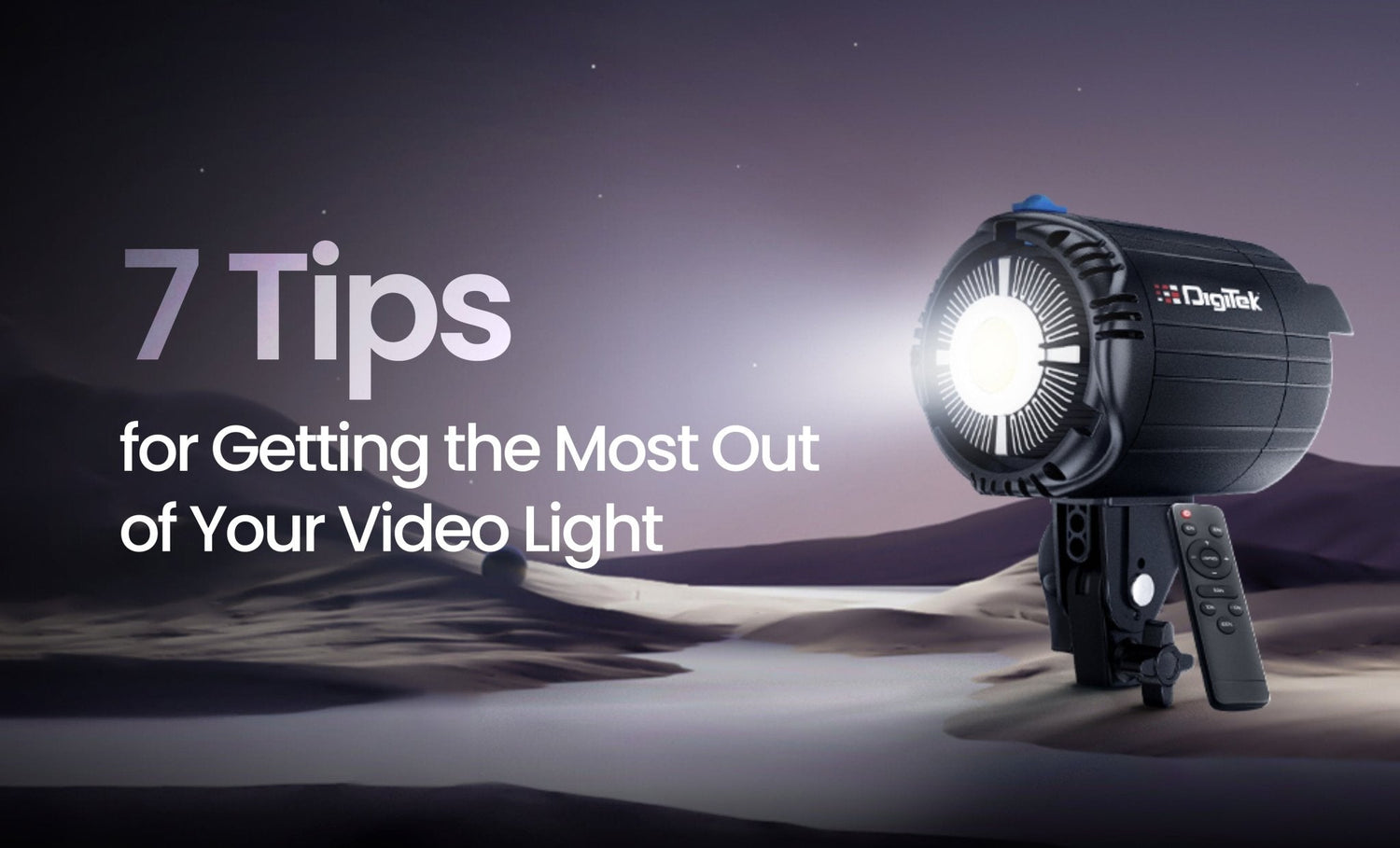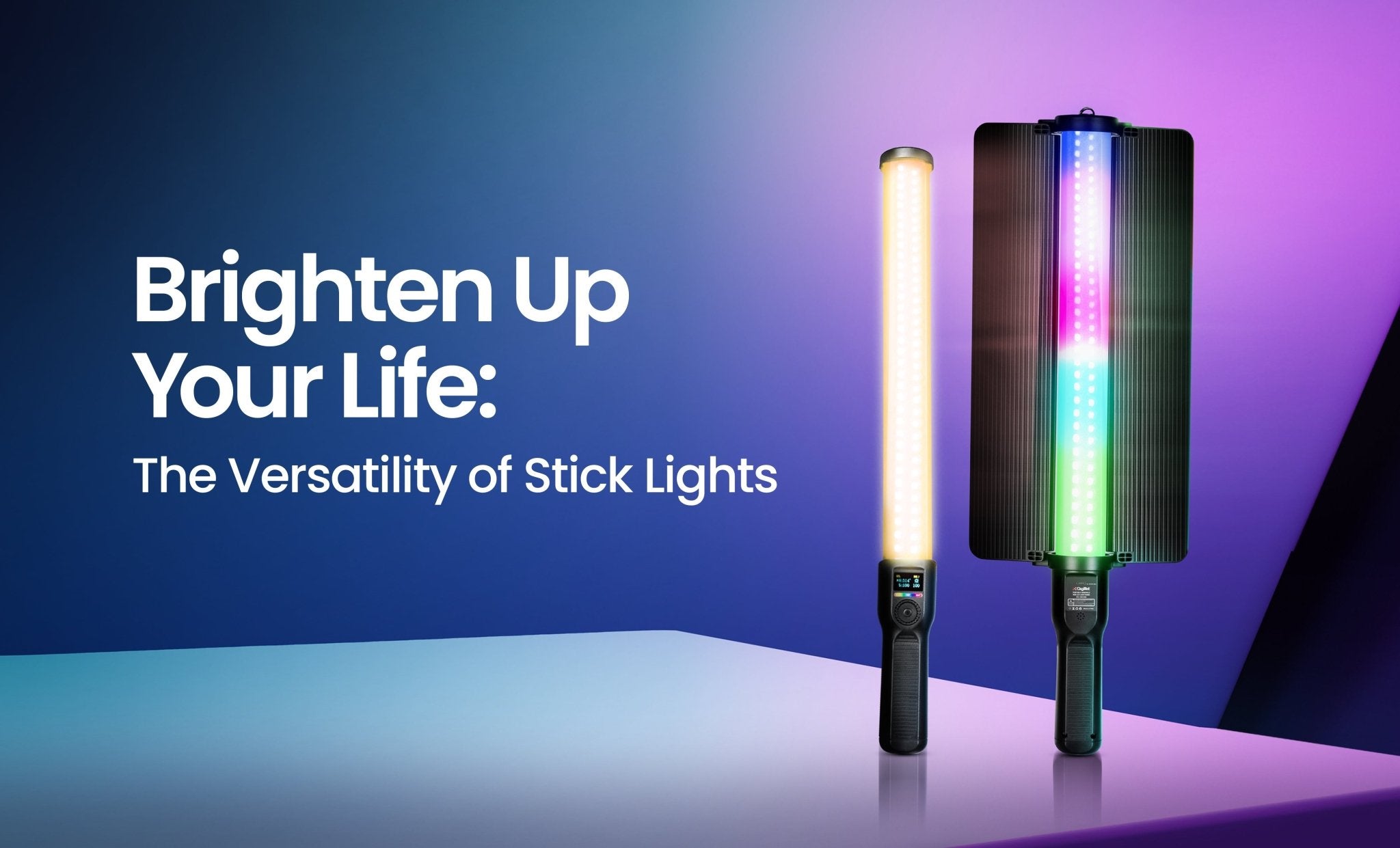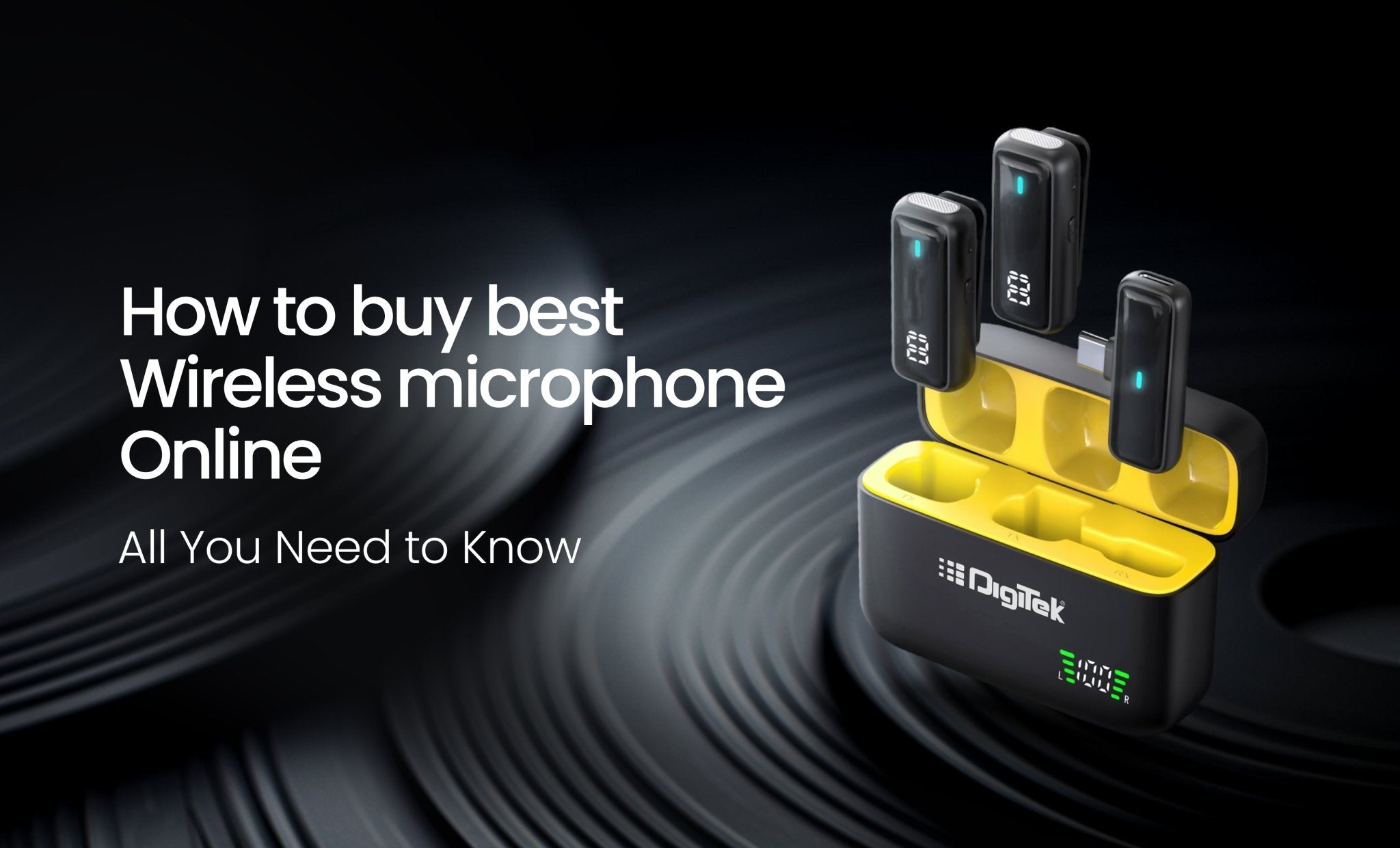In the dynamic world of videography, appropriate lighting is the foundation for creating visually appealing and professional content. Whether you're an experienced videographer or just starting in the world of video production, it's important to make the most of video lights for home potential. In this blog, you'll find seven valuable tips to help you maximize the impact of your lighting setup, increase the quality of your videos, and unlock the creative possibilities available to you.
7 Tips for Getting the Most Out of Your Video Light
Understand Your Lighting Equipment
Explore Your Video Light Features
First, familiarize yourself with the functions and possibilities of your video light LED. Discover the different modes, color temperature controls, brightness levels, and all the additional features your lamp can offer. With this basic knowledge, you can make precise adjustments tailored to each shooting scenario.
Master Color Temperature Control
The Importance of Color Temperature
Understanding color temperature is crucial to achieving the desired mood and atmosphere in your videos. By adjusting the color temperature of your video lighting, you can create a warm, inviting atmosphere or a cool, professional look. Most video lights LED offer adjustable color temperature, usually measured in Kelvin (K).
Master the Art of Key, Fill, and Backlighting
Key Light: Your Primary Source
diffusers play a key role in creating soft, attractive lighting by diffusing and diffusing direct light. Attach a diffusion panel or use a softbox with video LED lights for more natural, even lighting, reducing harsh shadows and minimizing unsightly reflections.
Embrace Diffusion for Soft, Even Lighting
Diffusers: Softening the Light
diffusers play a key role in creating soft, attractive lighting by diffusing and diffusing direct light. Attach a diffusion panel or use a softbox with a video light for more natural, even lighting, reducing harsh shadows and minimizing unsightly reflections.
Control Shadows with Barndoors and Grids
Barn Doors: Directing Light's Path
Barn Doors are adjustable flaps attached to your video light that allow you to control the direction of the light. Use them to shape and direct the light precisely, avoiding spillage onto unwanted areas and controlling the placement of shadows.
Consider the Quality of Your Background Lighting
Background Lighting Impact
If the main goal is to illuminate the subject, the quality of the backlight is equally important. Adjust the intensity and color temperature of video light to complement the background and create a cohesive visual narrative that draws the viewer's attention to desired focal points.
Batteries and Power Management
Optimize Battery Life
For filmmakers who travel a lot, battery management is crucial. Make sure you have an adequate supply of fully charged batteries for the video LED lights and consider investing in additional batteries or portable power sources to avoid interruptions while recording.
Conclusion
Mastering the art of video LED lighting is a lifelong journey that requires experimentation, understanding of equipment, and attention to detail. By following these seven tips, you can improve your video productions, create visually stunning compositions, and unlock the full creative potential of your video lights. Remember: The key is not only to illuminate your objects but also to create an immersive visual experience that captivates your audience and brings your creative vision to life.





Leave a comment
This site is protected by hCaptcha and the hCaptcha Privacy Policy and Terms of Service apply.